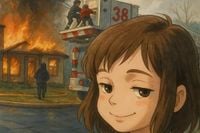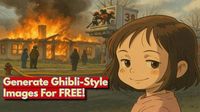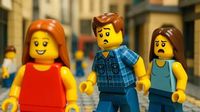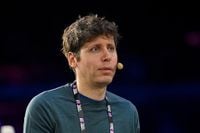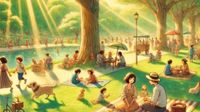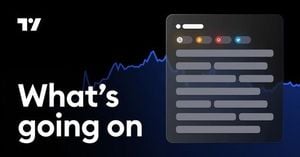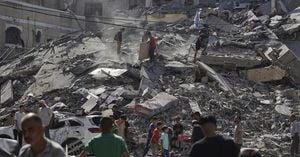Artificial intelligence and anime have collided in an unexpected way, and OpenAI CEO Sam Altman is feeling the heat—literally. As users flood ChatGPT with requests for Studio Ghibli-style images using the latest GPT-4o model, the surge in demand has pushed OpenAI’s GPU infrastructure to its limits, forcing the company to impose temporary restrictions.
The trend began when users discovered that GPT-4o’s latest image update could generate images reminiscent of the iconic Japanese animation studio’s signature aesthetic. The results were stunning—dreamlike landscapes, expressive characters, and soft watercolor-style visuals that instantly captivated social media. The demand for these AI-generated images skyrocketed, turning what was once a niche experiment into a full-blown viral sensation.
Altman took to X (formerly Twitter) to address the situation, revealing that OpenAI’s GPUs were “melting” under the strain. “It’s super fun seeing people love images in ChatGPT,” he wrote. “But our GPUs are melting.” He announced that temporary rate limits would be introduced to make the system more efficient, with free-tier users soon being limited to just three image generations per day. “We are going to temporarily introduce some rate limits while we work on making it more efficient. hopefully won't be long! ChatGPT free tier will get 3 generations per day soon,” Altman wrote further.
The move underscores the massive computing power required to sustain OpenAI’s multimodal AI capabilities. Unlike text-based interactions, image generation is significantly more resource-intensive, and the viral popularity of Ghibli-style art has put unexpected pressure on OpenAI’s infrastructure. The company is now scrambling to optimize its systems while also working to resolve another issue: overly restrictive moderation, which has resulted in some image requests being blocked erroneously.
This is not the first time AI-generated art has gone viral, but it highlights a growing challenge in the AI space—balancing accessibility with technical feasibility. Meanwhile, on the internet, as the Studio Ghibli trend spread like wildfire, many different artists and designers have also condemned the trend, with many saying that it destroys the artform’s true meaning.
In that context, an old video of Ghibli’s founder, Hayao Miyazaki, also went viral. In that video, the celebrated artist is seen opining that AI can never replace human art and design. “I can't watch this stuff and find [it] interesting. Whoever creates this stuff has no idea what pain is whatsoever. I am utterly disgusted. If you really want to make creepy stuff, you can go ahead and do it. I would never wish to incorporate this technology into my work at all,” he said.
OpenAI also updated its GPT-4o on March 27, 2025, restricting access to Ghibli-style image generation to paid users due to heavy usage. Free users will gain access to GPT-4o over the next few weeks, but for now, the ChatGPT free tier will soon only allow up to three generations per day. Users can still access all DALL-E images, which have been a staple of OpenAI's offerings.
The article provides a step-by-step guide on how to generate Ghibli images on ChatGPT by uploading a photo or describing the desired image. Users can create their own unique artwork by providing a description, and the AI will generate an image based on that prompt.
For those looking for alternatives, several other apps also offer Ghibli-style images. Google Gemini, backed by a major search engine, allows users to create captivating images in seconds. Users can start image generation prompts at Gemini for free, describing what they want in detail.
Another alternative is Grok AI, owned by Elon Musk’s xAI startup, which is accessible on both web and mobile. Grok AI lets users create Ghibli-style images, although free users may face limitations on the number of images they can generate in an hour.
Leonardo.AI is yet another AI image generator that has gained popularity, allowing users to choose from various high-quality AI models and experiment with different settings and presets. Other platforms like Playground AI and Artbreeder also provide options for users to create Ghibli-style images, though some features may require a paid upgrade.
As the demand for Ghibli-style AI art continues to grow, users are experimenting with ChatGPT's native image generation capabilities. Many are eager to test the potential of this new tool, creating everything from portraits to scenes inspired by various themes, including LEGO and ancient Roman sculptures.
OpenAI has now restricted the number of images even paid users can create, making it challenging for users to try out all the alternatives in one day. However, users can eventually explore them over time. This is not the first time that ChatGPT has been able to generate images; it has offered these services even to free users for a while, but the real catch is the native image generation capability that it has now acquired.
Native image generation refers to the chatbot's ability to generate and edit images directly using its multimodal capabilities rather than relying on external models like DALL-E 3. While Gemini introduced native image generation support earlier than ChatGPT, OpenAI's chatbot has gained better traction among the masses.
OpenAI has unlocked image generation capabilities directly in GPT-4o, allowing the chatbot to refine images through natural conversation. ChatGPT can now also handle between 10-20 different objects in an image, which brings more control and consistency to the images. Native image generation can also connect ChatGPT's text knowledge base with images, resulting in more efficient and intelligent responses.
As the landscape of AI-generated art evolves, the intersection of technology and creativity continues to be a hot topic. The debate over the implications of AI in the art world is far from settled, with voices both for and against the use of such technology in creative fields. As users explore the limits of what AI can do, one thing is clear: the future of art may very well be intertwined with the capabilities of artificial intelligence.
